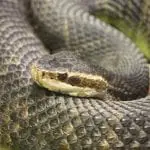Pet ownership has been steadily increasing in the US in the past few decades. While traditionally dogs and cats have been the preferred pets across US households, recent trends indicate a growing interest in reptiles as pets. Across many states, many households prefer reptiles such as lizards, snakes or turtles over furry pets. With reptiles being relatively more affordable and easier to care for, researchers predict the reptile pet ownership and associated businesses are poised for strong growth in the coming years.
What are reptiles?
Reptiles are a type of animals that are vertebrates (have a spinal column), have scales all over the body, lay eggs on the land, and are air-breathing. Common species of reptiles include turtles, lizards, snakes and crocodiles while lizards, snakes and turtles are typically kept as pets. Some species live in the water predominantly while others on land while many can live in both land and water. Reptiles can be either plant-eating (herbivores), insect-eating (insectivores), or meat eating (carnivores).
Reptiles are excellent alternatives for individuals who are allergic to feathered or furred animals. Reptiles may also be more suited for people with hectic lifestyles or work schedules as they are relatively easier to care for than dogs or cats. Some reptiles enjoy interaction with humans and human handling while some others prefer to be left alone. The interest in reptiles as pets is growing steadily across the US with people across many states preferring lizards, snakes or turtles as pets instead of dogs or cats.
Popular reptile species owned as pets
While there is no nationwide survey on the most popular reptile species that are kept as pets across the US, the following types of reptiles are believed to be some of the most popular.
Lizards – Iguanas are one of the most popular types of lizards that are kept as pets across the US. With a lifespan of 20 years, the iguanas have specific environmental and dietary needs.
Chinese Water Dragons – These are another type of lizards with very specific requirements in terms of lighting, humidity, heat and diet.
Leopard Geckos: Geckos are considered to be the ideal lizard or reptile pets for beginners given their relatively smaller size and docile nature.
Bearded Dragons: These lizards are native to Australia and grow up to 24 inches. Being desert dwellers, these lizards need relatively high temperature apart from exposure to ultraviolet light.
Corn Snakes: These are beautiful snakes that are docile and easy to take care of. While reaching a length of between 3 to 5 feet, the snakes live for ten years or at times longer with appropriate care.
Ball Pythons: Ball pythons are small constricting snakes that can reach a length of about four to five feet. Being docile and easy to maintain, the ball pythons are one of the most popular reptile pets. These snakes typically have a long life span of about 20 to 30 years while being the most common type of snake kept as pets in the US.
Eastern box turtles: These turtles are native to the eastern part of the US and are generally found near ponds, woodlands and fields. Box turtles are highly popular pets as they have a long-life span, do not need an aquatic environment and do not grow large like other tortoises. Being adaptable, the box turtles eat both insects and plants.
Overall pet ownership statistics
Two out of three homes in the US owns a pet. While dogs, fish and cats top the list of pets owned, there is also a rise in ownership of other animals including reptiles and small animals. While 95 percent of pet owners in the US consider them as family members, over two thirds of pet owners in the US are Millennials and Generation X.
According to a 2019-2020 survey conducted by the APPA (American Pet Products Association), 85 million families or sixty-seven percent of households own a pet in the US. The survey was first conducted in 1988, when 56 percent of households were pet owners.
The Insurance Information Institute (III) has put out a chart on number of households that own different types of pets in the US (in millions)
| Cat | 42.7 |
| Dog | 63.4 |
| Freshwater fish | 11.5 |
| Saltwater fish | 1.6 |
| Horse | 1.6 |
| Bird | 5.7 |
| Reptile | 4.5 |
| Small animal | 5.4 |
As is evident from this chart, most households (between 42 to 63 million households) own either a dog or a cat. About 4.5 million households own a reptile as a pet.
The chart below indicates the number of pets owned by animal type in the US in millions:
| Cat | 94.2 |
| Dog | 89.7 |
| Reptile | 9.4 |
| Saltwater fish | 18.8 |
| Freshwater fish | 139.3 |
| Horse | 7.6 |
| Bird | 20.3 |
| Small animal | 14.0 |
As per this estimate, freshwater fish are the most popular pets nationwide. About 9.4 million reptiles are owned as pets across the US. Each household that owns a reptile has an average of two reptiles.
Pet ownership by state
Pet ownership varies across states in terms of number of households that own pets as well as in terms of the preferred type of animal or breed.
Most households in Wyoming have pets while dogs and cats are the popular pets across Montana, Oklahoma, Mississippi, Texas, Kentucky, Alabama and Missouri.
When it comes to reptiles, the latest trends of ownership across states is as below:
- The most popular choice of reptile pets in Hawaii is the lizard. Close to 91.1 percent of reptile owners in Hawaii share the pictures of their pet lizards on the social media platforms.
- In Illinois, snakes are the reptiles that are preferred the most while boas rank as the top breed of snake in the state.
- Native Nevadans own more lizards than dogs or cats.
- In Texas as well, 59.4 percent of reptile conversations on social media are about lizards indicating them to be the most popular pet in this state.
- Lizards are also the most popular types of pets in West Virginia where 67.7 percent owning lizards.
- Half of households in 80 percent of states own at least one pet
Historical pet ownership
Pet ownership is steadily increasing in the US over the last few decades. This increase could be partially due to an increase in the number of pet counsellors and medical specialists which can mean better health care for pets. Reptile ownership also has increased slightly over the years.
Pet ownership overall has increased by 20 percent since 1988. According to Statista’s graph on reptile ownership in the US, the household penetration rate in 2007 was 2 percent that increased to 2.7 percent in 2013.
As per the 2017 figures from the American Veterinary Medical Association (AVMA), 3,669,000 households owned reptiles as pets while the total number of reptile pets were 6,032,000.
Looking ahead
The reptile business, while having advanced in the past decade, is set to grow further in the coming years, driven by the growing interest in lizards, snakes and turtles. Much like cat and dog owners, reptile pet owners too have strong ties with their unusual pets.
A pet market trends survey analysed the retail market in the US for non-food and food supplies for reptile pets including lizards, turtles, snakes, and amphibians. The researchers tracked the sales of these products across all retail channels including sales on online channels. Despite taking into account the pandemic’s expected impact, the analysis predicts that reptile products sales will grow by 2024 to reach anywhere between $550 to $650 million from the 2019 figures of $495 million.
To give a perspective, the total pet industry expenditures as well as the estimated expenditure on pets in 2020 are given in these tables.
Year In billions
2020 $99.0
2019 $95.7
2018 $90.5
For 2020, $99.0 billion was the estimated expenditure on all pets, including reptiles
Breakdown:
Pet treats and food $38.4 billion
Supplies, and over the counter medicine $19.8 billion
Vet care as well as pet product sales $30.2 billion
Others including pet insurance, walking and training $10.7 billion
A March 2020 survey revealed that 85 percent of pet owners that includes reptile owners, consider pets as their family members. Growth in reptile ownership is also due to the ongoing demographic shifts and tighter spaces in urban areas. Millennial households prefer to own smaller pets such as lizards or turtles that are ideal for compact urban spaces. Additionally, the impact of the coronavirus pandemic being felt in all areas, more and more people are looking for affordable options when it comes to pets. With reptiles being more affordable as compared to cats or dogs, many reptile owners believe their reptile setups to entail reasonable expenses. For children and adults who are homebound during the pandemic, the entertainment and bonding that these pets offer is one of the key factors that are contributing to growth in reptile ownership. Notwithstanding the pandemic, reptile pet ownership and associated businesses are poised for growth due to the heightened comfort levels these pets offer.


